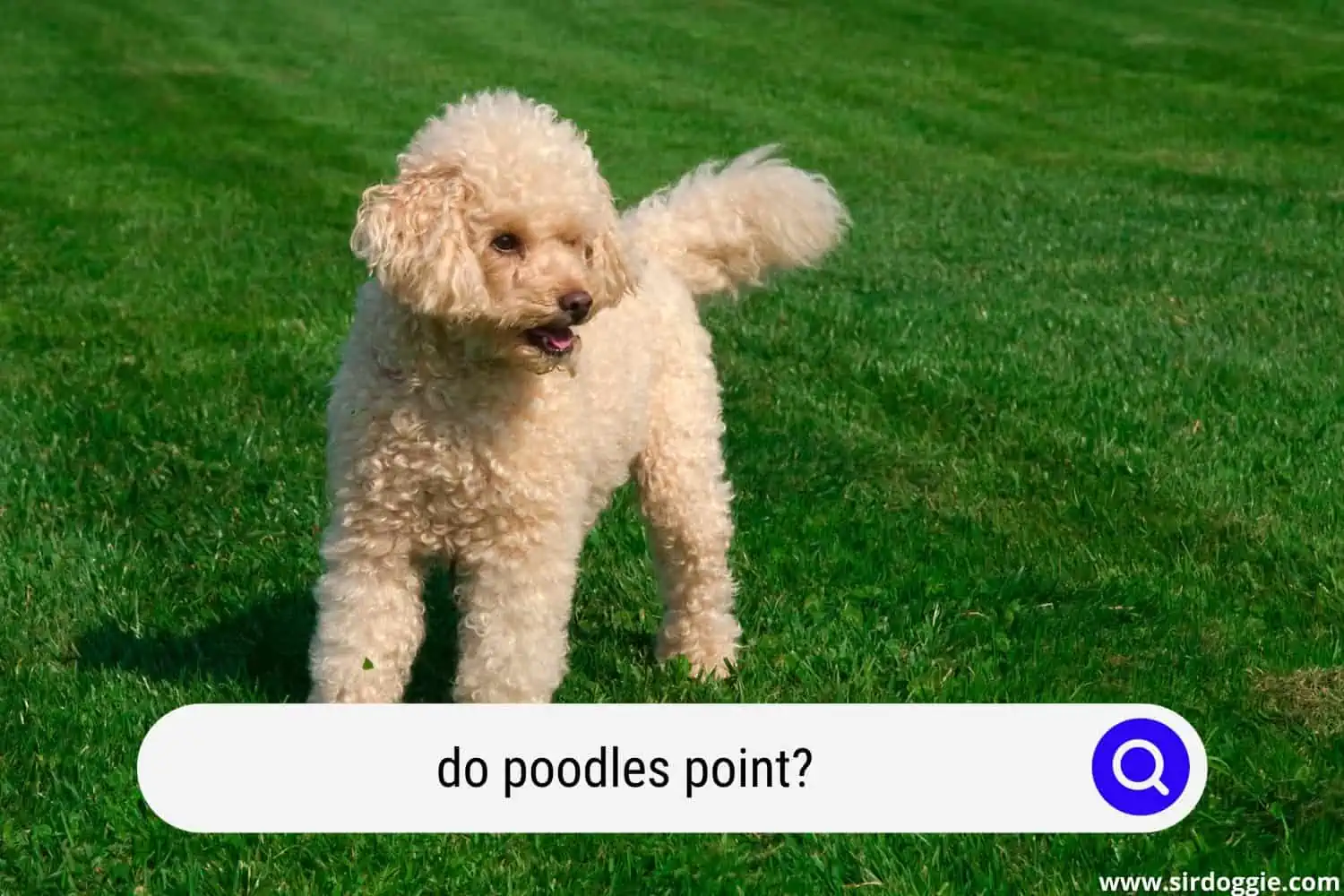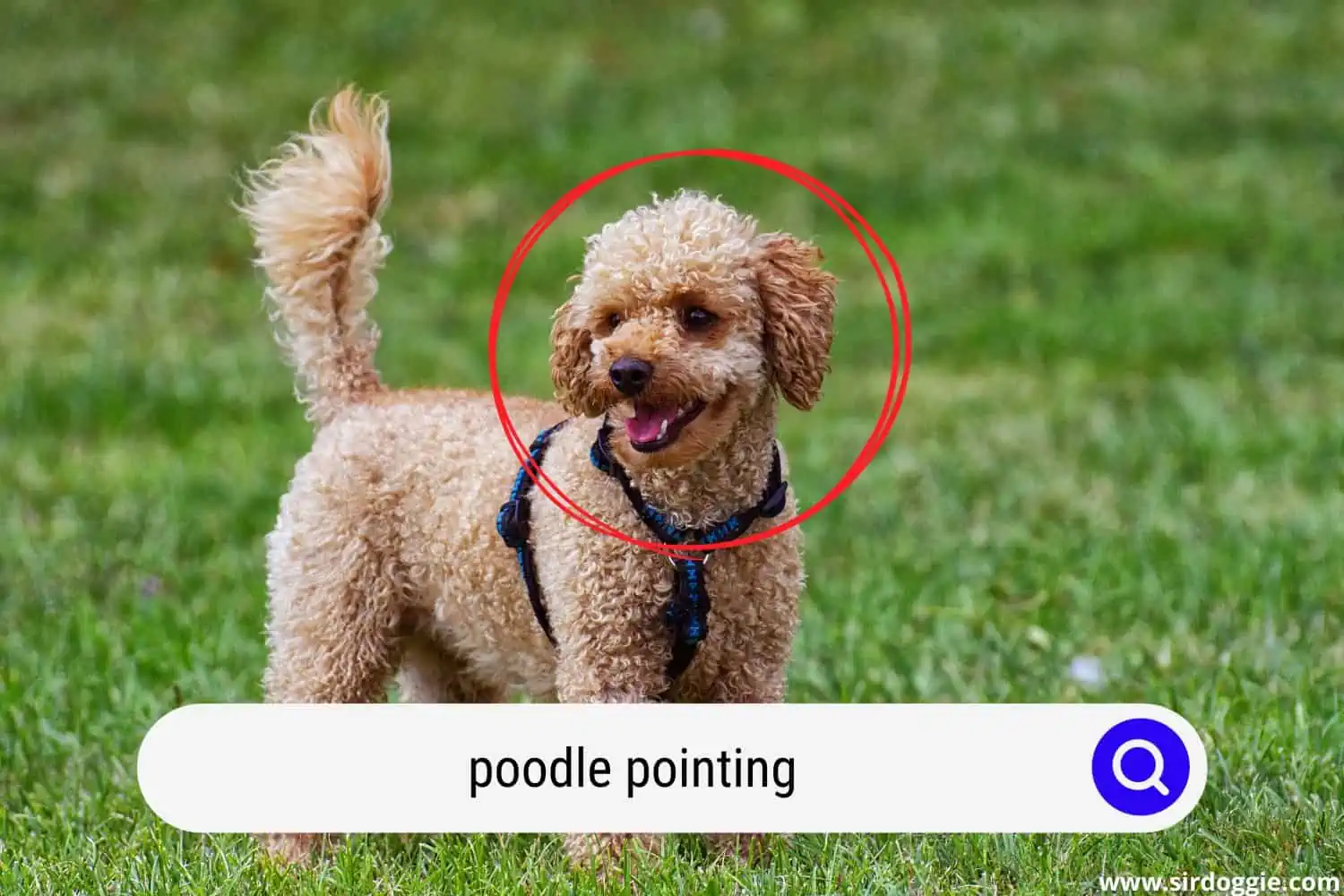Do Poodles Point? Read This first!
Have you ever gazed at your dog with a puzzled expression as it remained still, its gaze fixed upon something with a paw lifted? This type of unusual behavior is referred to as “pointing.”
This raises questions, though: do poodles point? And, if so, where does this bold and high-spirited trait come from?

Poodles are both bird dogs and water retrievers, which means that they do point. One probable explanation of the pointing seen in today’s poodles is that their ancestors were hunters. This means that the traits necessary for them to display pointing are present in poodles and may be expressed in some of their generations.
In most cases, poodles who are bred and trained for hunting will certainly engage in pointing, involving them becoming almost entirely still while directing their snouts toward an object of interest. Usually, hunting and pointing dogs perform this pointing behavior to assist their owners in actual hunting practices—and, as mentioned, poodles are also game dogs that help capture prey.
If trained well, pointing is a relatively common phenomenon in the breed. This hovering act of remaining in a pointing posture provides hunters with information on where to locate and capture their intended prey.
Note: Don’t be shocked if your pup exhibits this behavior as hunting breeds are not the only breeds of dogs who do it.
Related Reading: Why is My Poodle’s Skin Turning Black?
Demonstration of Poodle Pointing Behavior
When poodles notice a bird, squirrel, or rabbit, they may stop in their tracks and elevate a paw. Poodles are not the only dogs who do this, however. Other breeds, or mixed breeds, that are motivated by the desire to detect moving things frequently exhibit this behavior as well.
Some dogs will freeze in place without moving their paw, nose, or tail. Others may fix their gaze on a tiny animal before chasing, catching, or breaking the prey’s neck to kill it.
The Poodle’s Hunting Methods
The Poodle was historically a multipurpose hunting dog that was well-established before the invention of guns. They were originally used for capturing game birds.
In today’s hunting world, this dog is a multi-talented hunting dog, capable of tracking down and recovering upland game birds as well as waterfowl.
The poodle is a dog that moves across the field both effectively and briskly and retains its stamina. Some poodles will use a bouncing method to reach their target from time to time, especially when they are under deep cover. The poodle has great senses of smell and hearing, as well as significant drive and intellect. They will employ all of these characteristics—along with pointing—to locate and chase out prey.
What Does a Pointing Canine Look Like?
For a dog to “point,” it must be able to freeze its body—sometimes with one front paw lifted—and point its nose towards a certain location. They will do this to draw attention to anything of importance and alert their pet parent of where to look. Many people connect this behavior with dogs that were traditionally bred for hunting, although dogs of many breeds—including poodles—can and will point when they are properly trained.
What Does a Poodle’s Pointing Signal Indicate?
Poodles usually point when they discover something intriguing. This may be anything from a duck to a squirrel to a tennis ball.
Instructions for Training Pointing Dogs (Particularly Poodles)
If your poodle points for certain reasons—such as when he sees a neighbor’s cat or has to go outside—it may be possible to train them quite easily to do this for specific purposes since its genetics are favorable towards the pointing behavior.
If your dog has an interest in pointing, or if you are interested in seeing if your dog can point, you can attempt to reinforce the behavior in a variety of ways, such as the following:
- Teach your poodle to “stop” by using a whistle, bell, or vocal command to signal when it’s time for them to pause and engage in the pointing behavior. Dogs should be able to come to a complete halt on command before they are taught to point.
- During training, maintain a constant sequence of events (walking, stopping, focusing, pointing, and then rewarding).
- Keep in mind when you’re teaching your poodle to point out the sequence of events that must occur both before and after the point is delivered.
- Begin training in a small area with few distractions and progress to bigger areas with more distractions as your pup’s skills develop.
- If your poodle remains still, you must also remain motionless as well. Concentrate and be silent, and concentrate with your dog for a short period before rewarding him for his efforts.
- To assist in teaching your dog the skill of pointing, look for other poodles who are already trained to lead by example.
Although pointing is an inherent behavior in many poodles, it is primarily a learned skill in the majority of dogs.
It is important to note that it is never too late to teach your dog a new trick or behavior modification technique.

FAQs
What does a good “point” or “pointing behavior” look like?
The classic “point” is an extremely intense dog, standing immobile, with its nose pressed forward at the strongest smell, one front foot bent forward, and its tail (if it has one) pointing toward the sky.
A well-trained poodle’s point appears easy in its accuracy and control, yet it takes months of training to achieve that appearance along with continual practice.
Some breeds other than poodles, such as the German Wirehaired Pointer, are also well-suited for learning how to point like a pro.
What are poodles’ “pointing position” characteristics?
Every poodle has its own unique set of characteristics that define its pointing posture. However, handlers must learn to interpret each poodle’s body language to grasp what exactly the dog is trying to communicate.
Related Reading: Can Poodles Eat Fish? Read This First!

Family Dog Expert Author
Hi there! I’m Stuart, a devoted dog lover and family dog expert with over a decade of experience working with our furry companions. My passion for dogs drives me to share my knowledge and expertise, helping families build strong, loving bonds with their four-legged friends. When I’m not writing for SirDoggie, you’ll find me hiking, playing with my beautiful dog, or studying music.